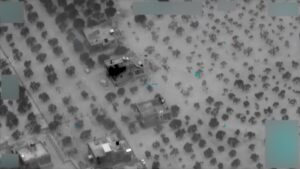
The U.S. helicopter destroyed following a Special Operations Forces raid to kill the leader of the Islamic State terrorist group on Wednesday night was experiencing a “drivetrain issue” during the infiltration phase of the operation, according to the Pentagon. John Kirby, the Pentagon press secretary, told reporters the mechanical issue “rendered it not usable for future flight in the operation” and Marine Gen. Frank McKenzie, commander of U.S. Central Command, ordered the helicopter to be purposefully detonated and destroyed. “The…

 By
By 











